My teaching philosophy is based on the premise that any golfer can learn the correct concepts and elements necessary for improvement. My job is simply to facilitate each student’s learning.
Correct Concepts
I teach generally accepted fundamentals in terms of all short game and full swing shots with an emphasis placed on how the club should move to create proper impact for the desired shot. In doing so, however, I always adhere to a strict set of priorities that I believe make it easier for my students to comprehend the information and allows them to focus on small areas of improvement. These priorities are as follows:
- Setup – The setup or address includes all aspects which comprise the Pre-Swing: Grip, Aim, Stance, Posture, Ball Position.
- Motion – The proper motion for each shot is explained.
- Contact – Correct Impact Alignments.
- Direction – Elements controlling straight or curving shots.
- Distance – Controlling and/or adding power.
I help my students learn to approach all golf shots (putting to driving) with these priorities in mind and in the proper order. Golf instruction is all about concepts. For the beginning golfer, instruction provides the correct concepts at the outset. For experienced golfers, instruction is often about changing the players’ incorrect or incomplete concepts. As golfers improve their concepts about the game, their game improves (assuming correct practice).
My job as a golf instructor is to impart the knowledge each player requires to help them achieve their goals. Some of my students aspire to play golf for a living on the various professional tours. Some of my students just want to learn the basics so they won’t “embarrass” themselves on the course. The majority of my students fall somewhere in between. Regardless of the students’ goals my job is the same…I must provide the tools, in the form of proper instruction, each student needs to get the job done. I am a facilitator in a sense, a guidance counselor, guiding each student on their own individual path towards their own golfing enlightenment. How is this accomplished? Initially, I explain to every student my belief that anybody seeking to become a better golfer must understand that there are several aspects to the game that must be addressed in order to improve. These aspects are:
- Full Swing – Covers all shots outside 100 yards.
- Short Game – All shots inside 100 yards: Chipping, Pitching, Bunkers and Putting.
- Mental Game – Course Management and Mental Approach
- Golf-Specific Fitness – Improving the body’s ability to perform the desired motion.
- Equipment – Matching clubs to student (specifications and set make-up).
When I work with a student I incorporate all of these aspects into their Golf Improvement Program. Additionally, I teach on the golf course as often as possible instead of on the range. Ultimately, golfers must learn to play the game, not just practice the game. There is a tremendous difference between playing and practicing. Even during range practice sessions, I encourage my students to create challenging situations which mimic the pressure and anxiety they will feel out on the golf course.
Perfect Practice
The concept of “perfect practice” is an idea developed through many years of research. While it may be true that golf cannot be mastered, all golfers who wish to improve should still strive for perfection, whatever that means for them. For example, if a golfer needs to change their grip, then the golfer should work on it until it is as “perfect” as possible. If a golfer aims poorly, he must learn correct aim and then continually practice until his aim improves while always striving to make it “perfect”. The golfer ultimately may never be perfect, but improving any aspect just a little at a time makes that aspect better and a little bit closer to perfect. As each element improves, the golfer’s competence increases and their game improves. Additionally, “perfect practice” incorporates multiple learning concepts into the practice routine: blocked/random, massed/distributed, and precision/playful. Each form of practice can be useful in helping golfers improve. This philosophy has served me well throughout my career with all levels of players (beginner to advanced). I believe the fundamentals of the golf swing are the same for all players. Although each player’s goal may be different, ultimately all players must learn similar elements to improve their level of play. Any attempt to over-simplify golf instruction invariably leads to a longer than necessary learning process. My goal is to help my students improve…I accomplish this goal by teaching the proper fundamentals utilizing a systematic, consistent and practical approach.
Correct Concepts + Perfect Practice = Better Player!
 Bradley Turner is a PGA Certified Professional in General Management and was elected into the PGA of America in 1988. The majority of his career was in the education industry, serving as the Campus President of the Golf Academy of America – Orlando campus from 1994-2018. As Campus President he was instrumental in the development of the curriculum along with the golf skill development and instruction program utilized by all GAA campuses. In 2005, Mr. Turner earned his Master’s degree in Business Administration having completed his Bachelor degree at Bowling Green State University. He has a strong competitive golf background and continues to participate in PGA section and chapter tournaments. In 2018, he received the Chapter Horton Smith Award in the NFPGA for his contributions in the education of fellow PGA professionals. He brings to Keiser University College of Golf a unique background in business education and experience combined with over 37 years of professional playing and teaching knowledge.
Bradley Turner is a PGA Certified Professional in General Management and was elected into the PGA of America in 1988. The majority of his career was in the education industry, serving as the Campus President of the Golf Academy of America – Orlando campus from 1994-2018. As Campus President he was instrumental in the development of the curriculum along with the golf skill development and instruction program utilized by all GAA campuses. In 2005, Mr. Turner earned his Master’s degree in Business Administration having completed his Bachelor degree at Bowling Green State University. He has a strong competitive golf background and continues to participate in PGA section and chapter tournaments. In 2018, he received the Chapter Horton Smith Award in the NFPGA for his contributions in the education of fellow PGA professionals. He brings to Keiser University College of Golf a unique background in business education and experience combined with over 37 years of professional playing and teaching knowledge.





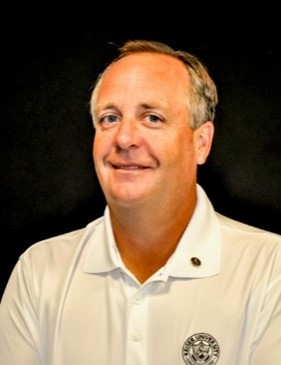 Brian Hughes is a PGA Master Professional in Instruction. Mr. Hughes comes to Keiser University after working for the San Diego Golf Academy, Carolinas Campus since 2004. He is an expert in golf education, having graduated from the Golf Academy of the South as Valedictorian. During his time at the TPC Avenel in Potomac, Maryland he assisted in the operation of six PGA TOUR events and played an integral role in the club being named one of Golf Shop Operations Magazine’s top 100 Golf Shops for five consecutive years. Later, as Head Golf Professional at the Golf Club at Yankee Trace in Centerville, Ohio, Brian was twice named the Southern Ohio PGA Merchandiser of the Year and was an extremely visible member of the community. Mr. Hughes went on to help develop two more facilities, Jericho National Golf Club in New Hope, Pennsylvania and Musket Ridge Golf Club in Myersville, Maryland. He brings to The College of Golf at Keiser University a wealth of educational, golf operations and tournament experience.
Brian Hughes is a PGA Master Professional in Instruction. Mr. Hughes comes to Keiser University after working for the San Diego Golf Academy, Carolinas Campus since 2004. He is an expert in golf education, having graduated from the Golf Academy of the South as Valedictorian. During his time at the TPC Avenel in Potomac, Maryland he assisted in the operation of six PGA TOUR events and played an integral role in the club being named one of Golf Shop Operations Magazine’s top 100 Golf Shops for five consecutive years. Later, as Head Golf Professional at the Golf Club at Yankee Trace in Centerville, Ohio, Brian was twice named the Southern Ohio PGA Merchandiser of the Year and was an extremely visible member of the community. Mr. Hughes went on to help develop two more facilities, Jericho National Golf Club in New Hope, Pennsylvania and Musket Ridge Golf Club in Myersville, Maryland. He brings to The College of Golf at Keiser University a wealth of educational, golf operations and tournament experience.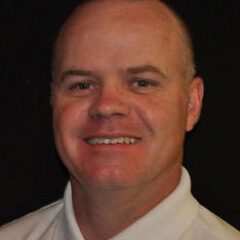 David Wixson is a PGA of America Master Professional in Instruction, a distinction currently held by less than 3% of golf professionals in the nation. A graduate of Millersville University of Pennsylvania, Mr. Wixson began his professional career as assistant golf professional at Spring-Ford Country Club near Philadelphia before going to Doral Resort and Country Club where he had the unique privilege of studying the teaching methods of three top 100 golf instructors: Jim McLean, Jimmy Ballard and Kevin Walker. Mr. Wixson joined the Marriott Golf organization, working at the Grand Hotel in Point Clear, Alabama. He was later named the Director of Instruction at Marriott’s Stone Mountain Golf Club, and also served as Senior Instructor of the Faldo Golf Institute at Marriott’s Seaview Resort. Since 2003, Mr. Wixson has operated Golf Perfect, LLC and served as Lead Golf Instructor for both MC’s Golf Academy and National Golf Schools in the Atlantic City. Mr. Wixson brings to The College of Golf more than 20 years of professional experience in the golf industry and a true passion for the game, both of which he looks forward to sharing with our students.
David Wixson is a PGA of America Master Professional in Instruction, a distinction currently held by less than 3% of golf professionals in the nation. A graduate of Millersville University of Pennsylvania, Mr. Wixson began his professional career as assistant golf professional at Spring-Ford Country Club near Philadelphia before going to Doral Resort and Country Club where he had the unique privilege of studying the teaching methods of three top 100 golf instructors: Jim McLean, Jimmy Ballard and Kevin Walker. Mr. Wixson joined the Marriott Golf organization, working at the Grand Hotel in Point Clear, Alabama. He was later named the Director of Instruction at Marriott’s Stone Mountain Golf Club, and also served as Senior Instructor of the Faldo Golf Institute at Marriott’s Seaview Resort. Since 2003, Mr. Wixson has operated Golf Perfect, LLC and served as Lead Golf Instructor for both MC’s Golf Academy and National Golf Schools in the Atlantic City. Mr. Wixson brings to The College of Golf more than 20 years of professional experience in the golf industry and a true passion for the game, both of which he looks forward to sharing with our students.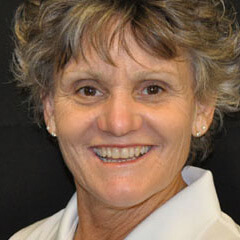 Ms. White’s tenacity and commitment to excellence drives her passion to promote the game of golf to any and all ages and abilities. Her students vary from beginner to tour player. She is an instructor for the LPGA Player Development program, a national program in which LPGA and PGA club professionals attend to improve their golf skills two times a year and conducts corporate golf schools in the U.S. and Canada. A native of North Carolina, Donna enjoyed a successful junior, amateur and collegiate career winning many titles including the 1976 United States Women’s Amateur Championship in 1976. While attending the University of North Carolina-Greensboro she teamed with Candy Sibbick to win the 1973 Women’s Two Person National Championship. Transferring to the University of Florida in 1974, she won multiple collegiate titles and graduated in 1976 with a BSPE degree with certification for grades K-12.
Ms. White’s tenacity and commitment to excellence drives her passion to promote the game of golf to any and all ages and abilities. Her students vary from beginner to tour player. She is an instructor for the LPGA Player Development program, a national program in which LPGA and PGA club professionals attend to improve their golf skills two times a year and conducts corporate golf schools in the U.S. and Canada. A native of North Carolina, Donna enjoyed a successful junior, amateur and collegiate career winning many titles including the 1976 United States Women’s Amateur Championship in 1976. While attending the University of North Carolina-Greensboro she teamed with Candy Sibbick to win the 1973 Women’s Two Person National Championship. Transferring to the University of Florida in 1974, she won multiple collegiate titles and graduated in 1976 with a BSPE degree with certification for grades K-12.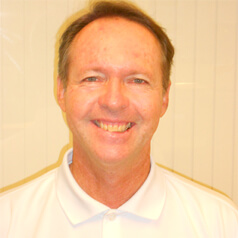 Ken Martin
Ken Martin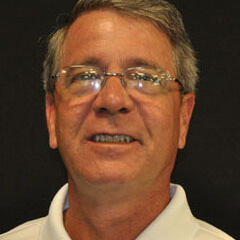 Frank Longabucco, Certified PGA Professional, was elected to the PGA of America in August 1998. A graduate of Rider University in New Jersey with a BS in Finance, he began his golf professional career as an assistant golf professional at Jacaranda Golf Club in Plantation Florida, and worked at several other golf clubs in the state over the next several years. As a head golf professional he brings a wealth of knowledge in all areas of golf operations and has been recognized for his customer relations skills. Mr. Longabucco became a Certified PGA Professional in Golf Operations in August 2006, and was additionally Certified in Instruction in 2011. He specializes in short game instruction, and believes that balance, tempo and a great short game are the key elements in scoring. Mr. Longabucco was winner of the 2003 SECSFPGA Pro-Pro Chapter Championship and 2007 SECSFPGA Pro-Pro Classic. Mr. Longabucco is truly excited to be part of Keiser University’s College of Golf and looks forward to sharing his knowledge in the classroom and on the golf course with our students.
Frank Longabucco, Certified PGA Professional, was elected to the PGA of America in August 1998. A graduate of Rider University in New Jersey with a BS in Finance, he began his golf professional career as an assistant golf professional at Jacaranda Golf Club in Plantation Florida, and worked at several other golf clubs in the state over the next several years. As a head golf professional he brings a wealth of knowledge in all areas of golf operations and has been recognized for his customer relations skills. Mr. Longabucco became a Certified PGA Professional in Golf Operations in August 2006, and was additionally Certified in Instruction in 2011. He specializes in short game instruction, and believes that balance, tempo and a great short game are the key elements in scoring. Mr. Longabucco was winner of the 2003 SECSFPGA Pro-Pro Chapter Championship and 2007 SECSFPGA Pro-Pro Classic. Mr. Longabucco is truly excited to be part of Keiser University’s College of Golf and looks forward to sharing his knowledge in the classroom and on the golf course with our students.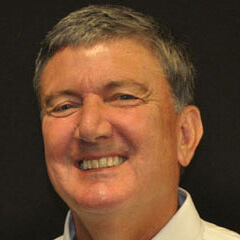 John Callahan, a graduate of Stonehill College in Massachusetts, earned Class “A” membership into the PGA of America in 1970. A fine player, Callahan is a former winner of both the Vermont PGA Stroke Play and Match Play Championships and was a member of the Tournament Players Division of the PGA in 1977 and 1978. Callahan has been the Head Golf Professional at private, public and resort courses, and since 2007 John has owned and operated The Callahan Golf Learning Center in Colchester, Connecticut. All through his career Callahan’s passion has been for teaching people the game of golf. He has given over 30,000 lessons to players ranging from beginners to PGA and LPGA Professionals. In 2011, Callahan’s teaching acumen was recognized by Golf Magazine which named him an “Adjunct-Top 100 Golf Instructor of America,” one of only seven included in the Short Game Instruction category out of thousands of nominees throughout the country. A believer that balance, tempo and a great short game are the key elements in scoring, Mr. Callahan was also pleased to become a full time faculty member at Keiser University’s College of Golf in 2011.
John Callahan, a graduate of Stonehill College in Massachusetts, earned Class “A” membership into the PGA of America in 1970. A fine player, Callahan is a former winner of both the Vermont PGA Stroke Play and Match Play Championships and was a member of the Tournament Players Division of the PGA in 1977 and 1978. Callahan has been the Head Golf Professional at private, public and resort courses, and since 2007 John has owned and operated The Callahan Golf Learning Center in Colchester, Connecticut. All through his career Callahan’s passion has been for teaching people the game of golf. He has given over 30,000 lessons to players ranging from beginners to PGA and LPGA Professionals. In 2011, Callahan’s teaching acumen was recognized by Golf Magazine which named him an “Adjunct-Top 100 Golf Instructor of America,” one of only seven included in the Short Game Instruction category out of thousands of nominees throughout the country. A believer that balance, tempo and a great short game are the key elements in scoring, Mr. Callahan was also pleased to become a full time faculty member at Keiser University’s College of Golf in 2011. Having served as a collegiate coach, Head Professional, and General Manager, Nancy’s passion for golf turned to teaching, and in 1992 she started the Nancy Quarcelino School of Golf which just completed its 27th year as a successful business in the Nashville, TN area at Gaylord Springs Golf Links.
Having served as a collegiate coach, Head Professional, and General Manager, Nancy’s passion for golf turned to teaching, and in 1992 she started the Nancy Quarcelino School of Golf which just completed its 27th year as a successful business in the Nashville, TN area at Gaylord Springs Golf Links.







